A professional industrial hygienist’s collection of thoughts, science articles, and OSHA memes.
Don't wanna be here? Send us removal request.
Photo
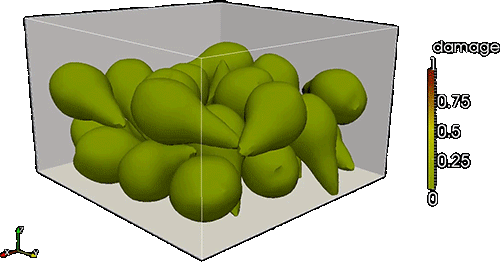
Damage prediction on pears during transportation.
580K notes
·
View notes
Text
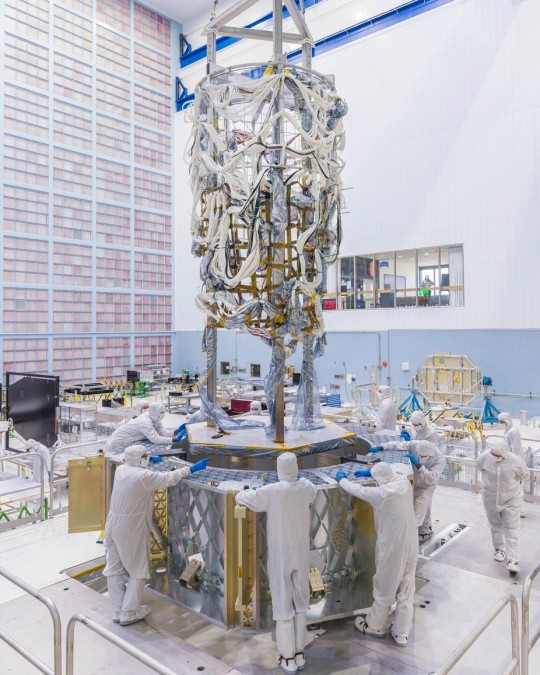
The Nancy Grace Roman Space Telescope’s flight harness is transferred from the mock-up structure to the spacecraft flight structure.
Your Body is Wired Like a NASA Space Telescope. Sort Of.
If our Nancy Grace Roman Space Telescope were alive, its nervous system would be the intricate wiring, or “harness,” that helps different parts of the observatory communicate with one another. Just like the human body sends information through nerves to function, Roman will send commands through this special harness to help achieve its mission: answering longstanding questions about dark energy, dark matter, and exoplanets, among other mind-bending cosmic queries.
Roman’s harness weighs around 1,000 pounds and is made of about 32,000 wires and 900 connectors. If those parts were laid out end-to-end, they would be 45 miles long from start to finish. Coincidentally, the human body’s nerves would span the same distance if lined up. That’s far enough to reach nearly three-fourths of the way to space, twice as far as a marathon, or eight times taller than Mount Everest!
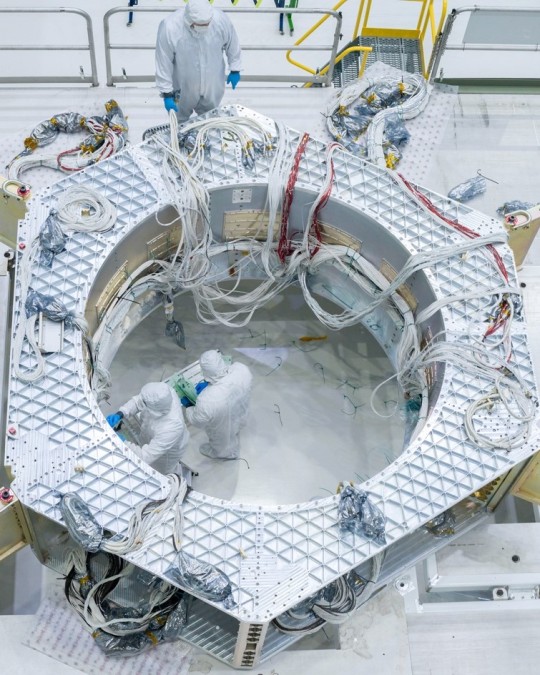
An aerial view of the harness technicians working to secure Roman’s harness to the spacecraft flight structure.
Over a span of two years, 11 technicians spent time at the workbench and perched on ladders, cutting wire to length, carefully cleaning each component, and repeatedly connecting everything together.
Space is usually freezing cold, but spacecraft that are in direct sunlight can get incredibly hot. Roman’s harness went through the Space Environment Simulator – a massive thermal vacuum chamber – to expose the components to the temperatures they’ll experience in space. Technicians “baked” vapors out of the harness to make sure they won’t cause problems later in orbit.
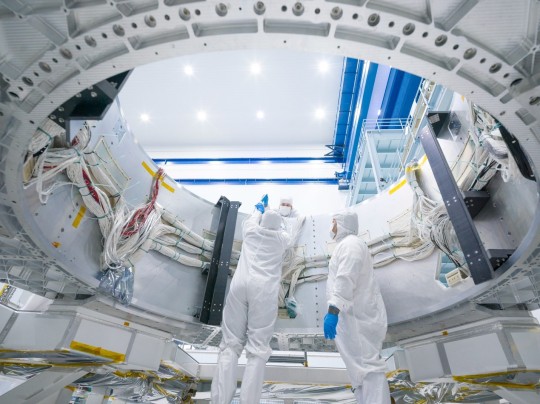
Technicians work to secure Roman’s harness to the interior of the spacecraft flight structure. They are standing in the portion of the spacecraft bus where the propellant tanks will be mounted.
The next step is for engineers to weave the harness through the flight structure in Goddard’s big clean room, a space almost perfectly free of dust and other particles. This process will be ongoing until most of the spacecraft components are assembled. The Roman Space Telescope is set to launch by May 2027.
Learn more about the exciting science this mission will investigate on X and Facebook.
Make sure to follow us on Tumblr for your regular dose of space!
4K notes
·
View notes
Text
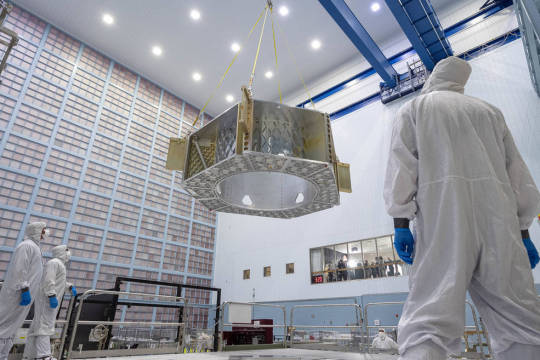
Roman's primary structure hangs from cables as it moves into the big clean room at NASA's Goddard Space Flight Center.
What Makes the Clean Room So Clean?
When you picture NASA’s most important creations, you probably think of a satellite, telescope, or maybe a rover. But what about the room they’re made in? Believe it or not, the room itself where these instruments are put together—a clean room—is pretty special.
A clean room is a space that protects technology from contamination. This is especially important when sending very sensitive items into space that even small particles could interfere with.
There are two main categories of contamination that we have to keep away from our instruments. The first is particulate contamination, like dust. The second is molecular contamination, which is more like oil or grease. Both types affect a telescope’s image quality, as well as the time it takes to capture imagery. Having too many particles on our instruments is like looking through a dirty window. A clean room makes for clean science!

Two technicians clean the floor of Goddard’s big clean room.
Our Goddard Space Flight Center in Greenbelt, Maryland has the largest clean room of its kind in the world. It’s as tall as an eight-story building and as wide as two basketball courts.
Goddard’s clean room has fewer than 3,000 micron-size particles per cubic meter of air. If you lined up all those tiny particles, they’d be no longer than a sesame seed. If those particles were the size of 16-inch (0.4-meter) inflatable beach balls, we’d find only 3,000 spread throughout the whole body of Mount Everest!
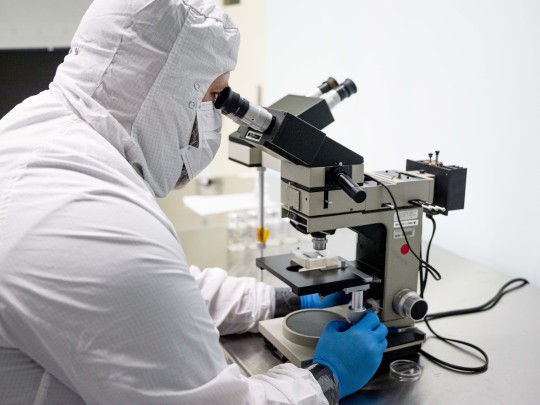
A clean room technician observes a sample under a microscope.
The clean room keeps out particles larger than five microns across, just seven percent of the width of an average human hair. It does this via special filters that remove around 99.97% of particles 0.3 microns and larger from incoming air. Six fans the size of school buses spin to keep air flowing and pressurize the room. Since the pressure inside is higher, the clean air keeps unclean air out when doors open.

A technician analyzes a sample under ultraviolet light.
In addition, anyone who enters must wear a “bunny suit” to keep their body particles away from the machinery. A bunny suit covers most of the person inside. Sometimes scientists have trouble recognizing each other while in the suits, but they do get to know each other’s mannerisms very well.

This illustration depicts the anatomy of a bunny suit, which covers clean room technicians from head to toe to protect sensitive technology.
The bunny suit is only the beginning: before putting it on, team members undergo a preparation routine involving a hairnet and an air shower. Fun fact – you’re not allowed to wear products like perfume, lotion, or deodorant. Even odors can transfer easily!
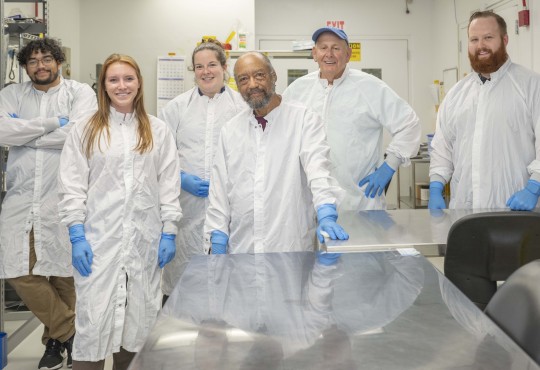
Six of Goddard’s clean room technicians (left to right: Daniel DaCosta, Jill Bender, Anne Martino, Leon Bailey, Frank D’Annunzio, and Josh Thomas).
It takes a lot of specialists to run Goddard’s clean room. There are 10 people on the Contamination Control Technician Team, 30 people on the Clean Room Engineering Team to cover all Goddard missions, and another 10 people on the Facilities Team to monitor the clean room itself. They check on its temperature, humidity, and particle counts.

A technician rinses critical hardware with isopropyl alcohol and separates the particulate and isopropyl alcohol to leave the particles on a membrane for microscopic analysis.
Besides the standard mopping and vacuuming, the team uses tools such as isopropyl alcohol, acetone, wipes, swabs, white light, and ultraviolet light. Plus, they have a particle monitor that uses a laser to measure air particle count and size.
The team keeping the clean room spotless plays an integral role in the success of NASA’s missions. So, the next time you have to clean your bedroom, consider yourself lucky that the stakes aren’t so high!
Make sure to follow us on Tumblr for your regular dose of space!
2K notes
·
View notes
Text
Elemental Profile: Niobium

Niobium is the forty first element on the periodic table, giving it forty one protons and electrons. The free element is not found in nature and is often found alongside tantalum, to which it is very similar.
On the periodic table, the element is characterized as a transition metal. Given the sheer number of transition metals it is difficult to define any definite characteristics but, generally, transition metals are paramagnetic with more than one oxidation states. Also, metals typically (though not always) have high electrical conductivity as well as high density and high melting and boiling points.
Niobium is a ductile, gray metal that becomes a superconductor at cryogenic temperatures. It has one naturally occurring isotope.
Source.
29 notes
·
View notes
Text
Elemental Profile: Palladium

Palladium is the forty sixth element on the periodic table, giving it forty six protons and electrons. Palladium can be found as a free metal alloyed with gold and other platinum group metals.
On the periodic table, the element is characterized as a transition metal. Given the sheer number of transition metals it is difficult to define any definite characteristics but, generally, transition metals are paramagnetic with more than one oxidation states. Also, metals typically (though not always) have high electrical conductivity as well as high density and high melting and boiling points.
Along with five other elements, palladium is also a member of the platinum group. These six metals are highly resistant to wear and tarnish as well as chemical attack, have excellent high-temperature characteristics, and stable electrical properties.
A soft silver-white metal, palladium is unique in that it has fewer filled electron shells than the elements directly preceding it. There are seven naturally occurring isotopes, six of which are stable.
Source.
27 notes
·
View notes
Text

Imagine leaving the house to go pick up your meds…then be told you’re faking illness. Damn.
20K notes
·
View notes
Photo

The X-37B Orbital Test Vehicle-6 sits on the flightline at NASA’s Kennedy Space Center, Fla., after completing its sixth successful mission, Nov. 12. 2022. (U.S. Air Force photo by Staff Sgt. Adam Shank) #retrowar
101 notes
·
View notes
Photo



Mizushima Industrial Complex Kurashiki City, Okayama Prefecture, Japan image credit: @EN_EL15a on Twitter
113 notes
·
View notes
Link
“Oncologists have faced a growing phenomenon that they don’t know how to explain: more and more people develop lung cancer without ever smoking. Such patients make up about 15% of all cases. “
0 notes






